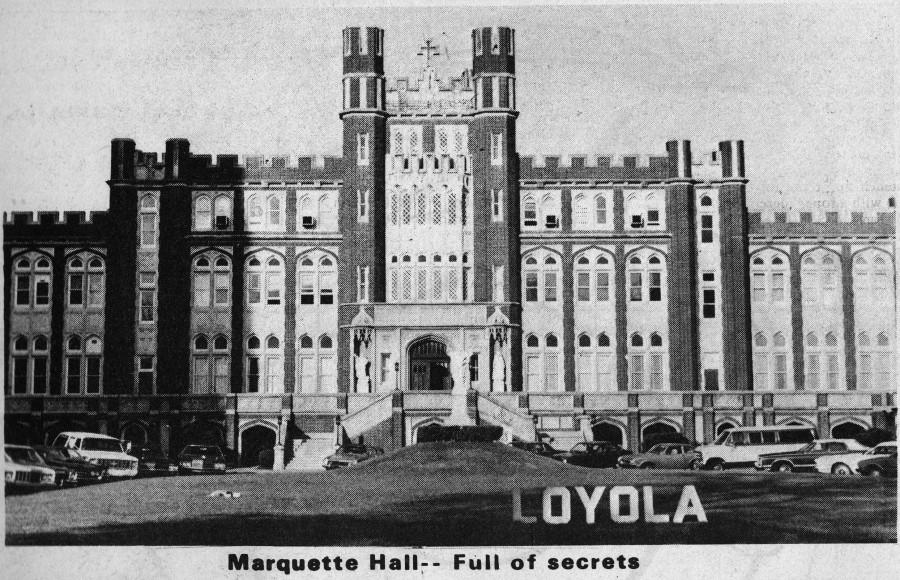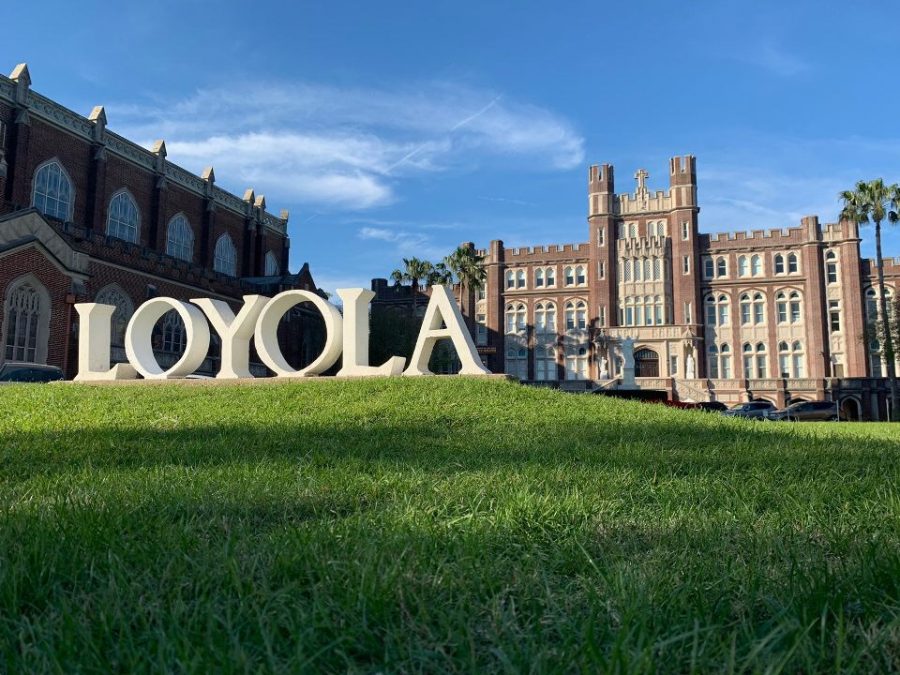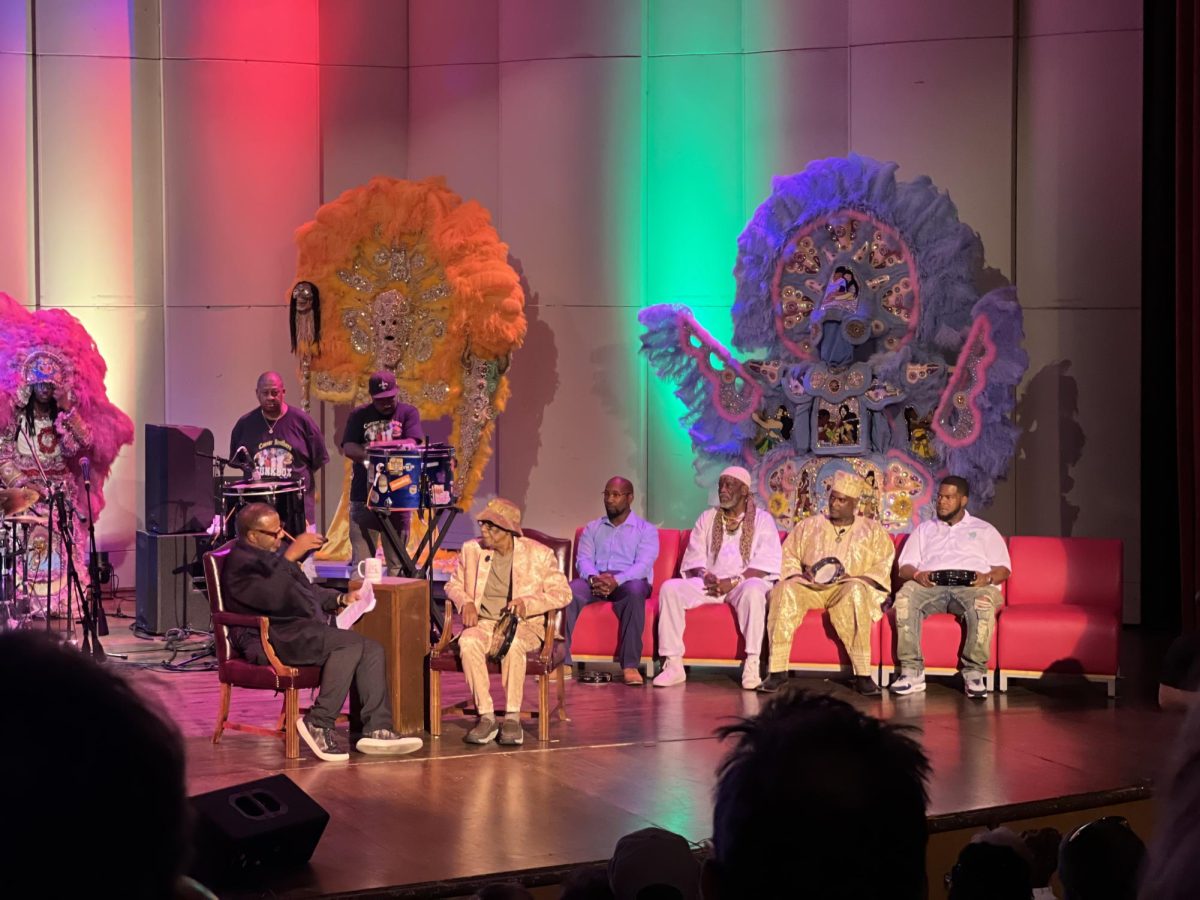Before the early 1960s, it wasn’t unusual to see dead bodies being pulled up the walls of Marquette Hall with a block and tackle. Their destination was the fifth floor: then an anatomy laboratory, today a painting and printing studio.
“They brought them here to Marquette Hall on the side of the quadrangle wrapped up in a sheet. They had a stench up the top, and they were lifted up with a rope,” described the Rev. Francis L. Janssen, S.J., director of the Documents Center, who has been at Loyola since 1919.
The anatomy room was used from 1914 to the early 1960s by Loyola’s now defunct School of Dentistry for the dissection of cadavers, which were brought to Loyola from the local hospitals, mainly Charity. “They gathered bodies of people who either had no relatives or were not claimed. They had to inject them with formaldehyde to preserve them,” Janssen said.
“It was a systematic thing when the students dissected the cadavers. Under the guidance of an instructor, they followed a text book, placing special emphasis on the dissection of the head and neck, but the rest of the body was also used,” he added.
According to Dr. Victor Halperin, the last dean of the School of Dentistry and presently a lecturer in the Dental Hygiene Department, Loyola would receive an average of 15 bodies a year.
Dentistry students at first were a little shy about dissecting, according to Halperin.
Dr. Edward Levy, a 1947 graduate and present chairman of the Dental Hygiene Department, agreed.
“I couldn’t eat roast beef during the first three weeks after dissecting a body,” Levy said.
Today, all remnants of the anatomy lab are gone. The old wash basins have been replaced by new ones, which are more useful for a print-making class held there. The freezer where bodies were kept, the tables, the tools, and even the pulley on the outside are gone. They all left even before the dental school folded in 1971.
All that remains today are a few scattered stories about ghosts.







